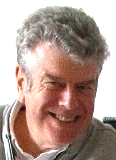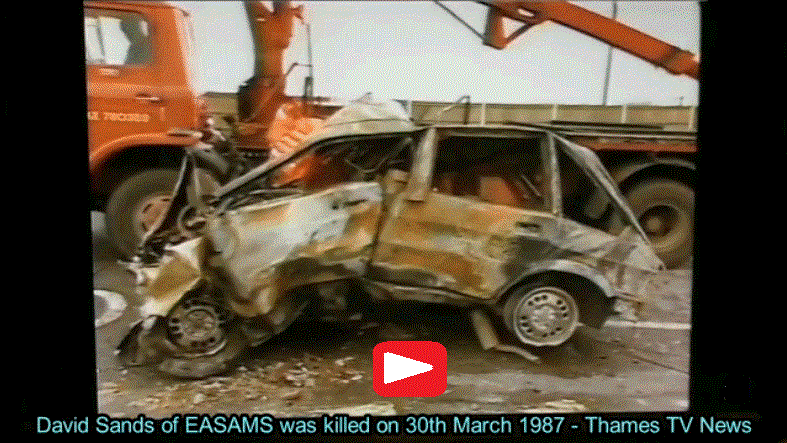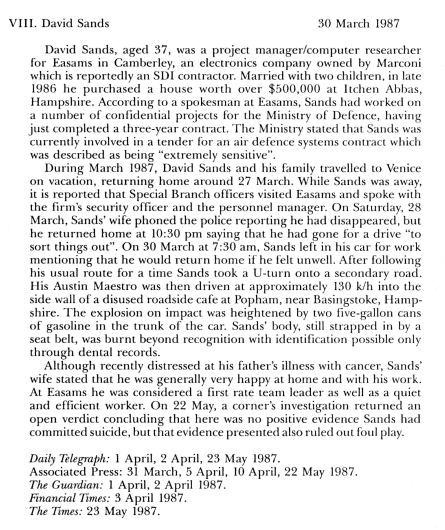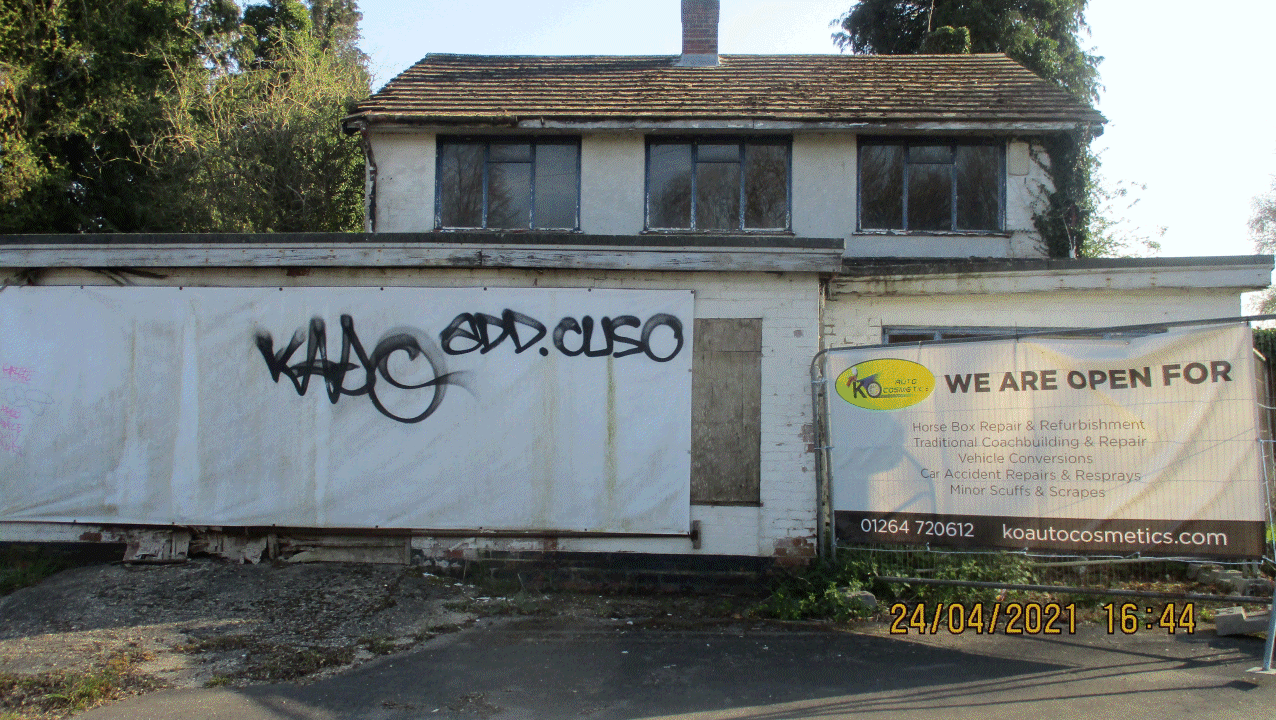These pages may not present clearly on some small smartphone screens; please use a normal large screen on a desktop, laptop, or tablet in landscape mode. Thankyou.
© Robin Lovelock.

To see use of the translation flags, and translated subtitles on Youtube videos,
Play Video Here
. Videos only play from English pages.
















Home .
About .
Contact .
AsOnTV .
Grumpy .
GPS .
Downloads .
Business .
AVL .
Links .
History .
Family .
Holidays .
Snoopy .
City Uni .
Ferranti .
EASAMS .
covid19
 from Robin Lovelock at 1920z on Friday 10th December 2021:
Hi Guys. I'm curious why, in the past few days, there have been a lot of visits to this page.
Anyone looking at those stats near the bottom of this page, will see that, instead of the one
or two visits per per day - probably me checking the counters - we've had one or two hundred
per day. The most probable explanation is that someone has posted the link on a forum or web site.
I'm relaxed about this, and am certainly not seeking lots of visits from "Joe Public".
The most practicable way of contacting me is by email, to my usual robin@gpss.co.uk and,
of course, this and all my other contact information has been unchanged and public for decades
- on that
Contact
page above.
Please DO NOT pass me anything that I cannot share with anyone, but
- whoever you are - I look forward to hearing from you - to satisfy my curiosity :-)
from Robin Lovelock at 1920z on Friday 10th December 2021:
Hi Guys. I'm curious why, in the past few days, there have been a lot of visits to this page.
Anyone looking at those stats near the bottom of this page, will see that, instead of the one
or two visits per per day - probably me checking the counters - we've had one or two hundred
per day. The most probable explanation is that someone has posted the link on a forum or web site.
I'm relaxed about this, and am certainly not seeking lots of visits from "Joe Public".
The most practicable way of contacting me is by email, to my usual robin@gpss.co.uk and,
of course, this and all my other contact information has been unchanged and public for decades
- on that
Contact
page above.
Please DO NOT pass me anything that I cannot share with anyone, but
- whoever you are - I look forward to hearing from you - to satisfy my curiosity :-)
Mysterious Deaths of Marconi Engineers
Updated 2335 BST UK time (2235z GMT/UT/GPS Time) Saturday 24th April 2021 (See Footnote at end)

 from Robin on 15th October 2014: I decided to put up this page on my web site, in case the information below, pasted from another, should get lost.
It relates to an incident, that I distinctly remember, from what must now be approaching 30 years ago:
the mysterious
death of a close colleague of mine at EASAMS, David Sands. The words below say the incident was on 30 March 1987,
and that sounds about right. The words below certainly match my reccolection of the situation then, and what I understand happened.
from Robin on 15th October 2014: I decided to put up this page on my web site, in case the information below, pasted from another, should get lost.
It relates to an incident, that I distinctly remember, from what must now be approaching 30 years ago:
the mysterious
death of a close colleague of mine at EASAMS, David Sands. The words below say the incident was on 30 March 1987,
and that sounds about right. The words below certainly match my reccolection of the situation then, and what I understand happened.
I believe it was on a Monday morning, that I received an internal 'phone call from our personal manager, who said
something like, "I have some bad news: David Sands has been killed. If you receive any 'phone calls from the Press,
you are to say nothing". They then ended the call, since they obviously had other calls to make.
David and I were both managers, reporting to the same boss, but I had never worked with him. I was, however, familiar
with the projects he had worked on, including the large one for the British Army, that he had managed through years of
studies and bids. EASAMS had just practically won this £100 million contract, largely due to David and his team's efforts.
I soon got to know the basic facts, on the "grapevine" near the coffee machines, where engineers would chat.
They match the account below.
It is only these many years later, that my curiosity caused me to google on David's name, and I found articles,
including that below.
I note with interest the words near the start that say,
"As one investigating police officer said: "We'll probably know all the answers when the papers are released in 30 years time.".
That would be 2017, I guess ?
or maybe earlier ? See footnote below.
You may wish to
Search Cabinet Papers in the Government National Archives.
Something may eventually appear -
but note the caveat displayed at the start of that search page.
Some of you may wish to check this link, if you have knowledge of something that would have been discussed by the Government
- but make sure you choose discussions of over 30 years ago !
If anyone finds mention of the story on this page, I will be very interested. You may contact me
via the "contact" page above.
During those "cold war" days, it would have made complete sense for the Russians to have been "bumping off" senior
defence industry managers and engineers. How else could they counter the enormous technical ability and economic power of western defence
industry ? It also would have made sense for our own UK Government to "keep things quiet", since, if we'd known what
was going on, how many of us would have changed our career, deciding that "it was just not worth the risk" ?
How much more would the Russians have achieved, if they had fed the right information to our Press ? Or perhaps they did ?
You will find this story in many places, including wiki, but this is the account that I found some time ago:
the following text is pasted from
a page on democraticunderground.com.
Footnote added in October 2014: maybe the Russian-Afghanistan conflict (1979-1989) might be
indirectly relevant ? See the
Wiki article on Soviet War in Afghanistan.
Note that this article is disputed - presumably where it talks of the insurgents receiving massive help from the USA
and UK, including selling arms. Interesting to know who objected to this article ?
If you google "mysterious deaths of marconi engineers" you find this
Wiki article
which indicates the "story" started earlier, so MAY appear in Cabinet Papers long before 2017.
Maybe the Press will be motivated more than most of us to investigate things like Cabinet Papers.
e.g. did the UK Government put "Gagging Orders" on the Press about this,
about thirty years ago, to "protect national security" ?
I have an open mind on this story, but certainly think it sounds credible. I would welcome the Press
searching cabinet papers, or other sources, to throw light on if there were any truth in the story.
However, I share the concern of colleagues, that any new publicity, does not cause distress to
the families of those mentioned below.
QUOTE
... Mysterious deaths of GEC-Marconi scientists
Edited on Sat May-03-08 07:56 AM by Joanne98.
In 1986 a Bristol coroner, Donald Hawkins, spoke of a possible "James Bond" connection between the deaths of two computer experts involved in key underwater defence projects. Since then the mysterious deaths and accidents of other defence workers came to light.
Most incidents occurred after the men have successfully completed important projects or left one job for another.
Four of the dead men were employees of the GEC group - three at Marconi and one at EASAMS. Two others worked at separate times at the Royal Military College of Science at Shrivenham. An investigation by Computer News established that most of the men were involved in computer simulation, a key part of defence procurement.
At the time GEC-Marconi was Britain's only torpedo supplier and in 1986 was awarded a £400 million GBP order from the Ministry of Defence for advanced anti-submarine Sting Ray torpedoes. The Royal Military College at Shrivenham is also involved in a number of Britain's leading edge defence projects. The college develops new testing devices for the Ministry of Defence and is engaged as a subcontractor to defence companies on research and development.
All the men involved were ambitious and demonstrated a special ability in their particular field. After every death, police gave unofficial press briefings which provided journalists with plausible, though unconfirmed, explanations for the accidents or apparent suicides. None of the men had any apparent motive for killing themselves. The major problem for the police has been the lack of any obvious signs of depression in any of the cases. Several British Members of Parliament have demanded a full government inquiry, including Labour MP and life peer Doug Hoyle, who was the co-president of the Manufacturing, Science & Finance Union. The Thatcher government refused to launch any sort of inquiry. The Pentagon also refused to comment on the deaths. The British government contends that the deaths are all a matter of coincidence.
The answer to the mystery may never be known, at least in the short term. As one investigating police officer said: "We'll probably know all the answers when the papers are released in 30 years time." NBC News London correspondent Henry Champ famously wrote, "In the world of espionage, there is a saying: Twice is coincidence, but three times is enemy action."
Specific incidents
Vimal Dajibhai
Marconi Underwater Systems employee Vimal Dajibhai, 24, an electronics graduate and computer-software engineer who worked on the guidance systems of the Tigerfish and Stingray torpedoes, and also an SDI related simulation system, based at Croxley Green, Hertfordshire, was about to leave Marconi for a higher-paying job in the City of London, and was found dead 250 feet beneath the Clifton Suspension Bridge in Bristol (a city with which he had no known connection), 100 miles from his home in London, on 4 August 1986. He had told his wife that he would be working late that night. The police report on the body mentioned a needle-sized puncture wound on his left buttock which led to the funeral being halted seconds before the cremation was to take place, reportedly so that a second post-mortem could be carried out by a Home Office pathologist. A police press conference later announced that the wound was caused by a bone fragment. Friends had confirmed that there was no reason for Dajibhai to commit suicide and denied that he had been suffering from depression or had any history of personal or emotional problems. At the time of his death, Dajibhai was in the last week of his employment with Marconi. An inquest was unable to determine whether Dajibhai had been pushed off the bridge or whether he had jumped and the coroner's verdict remains open. There had been no reported witnesses.
Arshad Sharif
Marconi Space and Defence systems employee Arshad Sharif (also known as Ashad or Ashaad), 26, a London based computer analyst and programmer reported to have been working on systems for the detection of submarines by satellite, was also found dead in Bristol on 28 October 1986. Sharif allegedly drove to a public park not far from where Dajibhai had died and tied a nylon ligature around a tree and the other end around his neck, then drove off in his Audi 80 automatic car at high speed, decapitating himself. Marconi initially claimed Sharif was only a junior employee, although co-workers stated that he was apparently about to be promoted and take over the running of a department at Marconi's Stanmore, Middlesex headquarters, and had worked for a time in Vimal Dajibhai's section. Sharif spent the last night of his life in a rooming house, which he had paid for in cash and was reportedly seen to have a bundle of high-denomination banknotes in his possession. While the police were told of the banknotes, no mention was made of them at the inquest and they were never found. Prior to working for Marconi, Sharif had also worked at British Aerospace on guided weapons technology. Investigating officers maintained that he had killed himself because he'd been jilted by an alleged lover, who he hadn't seen in three years and who contends that she was only his landlady whilst he was working for British Aerospace in Bristol. Sharif also had a fiancée in Pakistan at the time. Authorities claimed to have found a taped message in Sharif's car "tantamount" to a suicide note. On it, officers said, he'd admitted to having had an affair, thus bringing shame on his family. Family members who've heard the tape say that it actually gave no indication of why Sharif might want to kill himself. Sharif's family were told by the coroner that it was "not in their best interest" to attend the inquest. He also had no history of depression, and there was absolutely no reason for him to be in Bristol at the time. The coroner's verdict was suicide.
David (Edwin) Skeels
David (Edwin) Skeels, 43, an engineer with Marconi who was found dead in his car in February 1987. He was a victim of carbon monoxide poisoning, and a hosepipe was found which led from the exhaust pipe of his car. The coroner's verdict was suicide.
David Sands
David Sands, 37, a senior scientist and satellite projects manager working for Easams, a sister company to Marconi, in Camberley, Surrey on sensitive computer controlled satellite radar systems, SDI and other air defence related projects, died when his car, carrying two additional five gallon petrol cans, exploded into flames as it crashed into the brick wall of a disused café at high speed in 30 March 1987. He had allegedly made a sudden U-turn on a dual carriageway while on his way to work and was found still wearing his seatbelt. The car exploded on impact and he was killed instantly. Sands, who was up for a promotion at the time, had just returned from a family holiday in Venice to celebrate the completion of a three-year command-and-control systems project. Given the incongruities of the accident, and the lack of a suicide motive, the coroner refused to rule out the possibility of foul play and an open verdict was returned. Information leaked to the press suggested that Sands had been under a tremendous emotional strain. Margaret Worth, Sands's mother-in-law, claims these stories are totally inaccurate. "When David died, it was a great mystery to us," she admitted. "He was very successful. He was very confident. He had just pulled off a great coup for his company, and he was about to be greatly rewarded. He had a very bright future ahead of him. He was perfectly happy the week before this happened."
Victor Moore
Marconi Space and Defence Systems employee and design engineer Victor Moore, 46, had just finished work on infrared satellites at Portsmouth when he was found dead in February 1987 from a drug overdose. The coroner's verdict was suicide, and is said to have instigated an MI5 investigation, the results of which remain secret. There is also a separate investigation into Marconi based at Portsmouth by the Ministry of Defence Serious Crime Squad.
Peter Peapell and Dr John Brittan
Two lecturers on top secret projects died in separate 'accidents' of carbon monoxide poisoning. Both had recently returned from America and had conducted research at the Royal Royal College of Military Science at Shrivenham, Oxfordshire:
The first, Peter Peapell, 46, a scientist, senior lecturer and underwater acoustics expert, was found dead beneath his car on 22 February 1987, with his face near the tail pipe and the door to the garage of his Oxfordshire home closed. He had been working on testing titanium for its resistance to explosives and the use of computer analysis to process signals emitted by metals, he was also a consultant on beryllium metallurgy(which is useful in nuclear weapons design). On the night of his death, Peapell spent an enjoyable evening out with his wife, Maureen, and their friends. When they returned home, Maureen went straight to bed, leaving Peter to put the car away. When she woke up the next morning, she discovered that Peter had not come to bed and went looking for him. Upon reaching the garage, she noticed that the door was closed. Yet she could hear the car's engine running. She found her husband on his back with his head parallel to the rear car bumper and his mouth directly below the exhaust pipe, with the car engine running. Initially, Maureen thought her husband's death was an accident. She presumed he'd gotten under the car to investigate a knocking he'd heard driving home the night before, and that he'd gotten stuck. However, the light fixture in the garage was broken, and Peter hadn't been carrying a flashlight. The coroner's inquest could not determine whether the death was a homicide, a suicide or an accident returning an open verdict, and police are unsure exactly how the accident happened with the circumstances of his death raising some elements of doubt. A constable of the same height and weight as Peter Peapell found it impossible to crawl under the car when the garage door was closed. He also found it impossible to close the door once he was under the car. His death was due to carbon monoxide poisoning, although carbon deposits from the inside of the garage door showed that the engine had only been running a short time. Yet, Mrs. Peapell had found the body almost seven hours after she'd gone to bed. According to Maureen Peapell, Peter had no reason to kill himself. They had no marital or financial problems. Peter loved his job, and he'd just received a sizable raise. According to colleagues he'd also exhibited "absolutely no signs of stress.". Foul play has not been ruled out.
The second, Dr John Brittan, 52, a former computer science officer and Ministry of Defense tank batteries expert at the Royal Military College was also found dead in a parked car in his garage, on 12 January 1987. The engine was still running. The coroner's verdict was accidental death by carbon monoxide poisoning. Dr. John Brittan had also worked at Camberley.
Stuart Gooding
On 10 April 1987 Stuart Gooding, 23, a post-graduate research student at the Royal Military College at Shrivenham was killed in a fatal car crash while on holiday in Cyprus. The death occurred at the same time as college personnel were carrying out exercises in Cyprus. He died instantly when his hire car collided head on with a lorry. The lorry driver was said to be unhurt. At least one senior employee at the college considered that the death could be significant. The coroner's verdict was accidental death.
Avtar Singh Gida
Avtar Singh Gida, 27, who was employed under contract by the MoD Admiralty Research Establishment and Marconi Space and Defence Systems, disappeared mysteriously on 8 January 1987 while writing his doctoral thesis on underwater acoustic signal processing at Loughborough University, just three weeks away from its successful completion. Both mainland police and Interpol launched searches for him in several countries, without success. However, he was eventually found four months later on 8 May 1987 working under an assumed name in a Paris sweatshop for illegal migrants. He claimed that he did not know precisely how he had got there. No charges were laid and police considered the case closed. Allegedly, he later returned to his work and stated that he does not want to discuss his disappearance nor the death of his colleague, Vimal Dajibhai. His PhD thesis entitled Synthetic Aperture Sonar, was finally successfully submitted in 1988 <2>
Robert Greenhalgh
In 1988 Robert Greenhalgh, a contracts manager at ICL's defence division at Winnersh near Reading, suffered multiple injuries after falling from a railway bridge on his way to work. The firm admitted he had been positively vetted and may have had access to secret UK and NATO data.
Shani Warren
Shani Warren (26) was a personal assistant in a company called Micro Scope, which was taken over by GEC Marconi less than four weeks after her death. Found drowned in 18in (450mm) of water, not far from the site of Greenhalgh’s death fall. Warren died on April 10, 1987, exactly one week after Gooding's death and Greenhalgh's injury. She was found gagged with a noose around her neck. Her feet were also bound and her hands tied behind her back. Coroner’s verdict: Open. (It was said that Warren had gagged herself, tied her feet with rope, then tied her hands behind her back and hobbled to the lake on stiletto heels to drown herself.)
http://en.wikipedia.org/wiki/Marconi_Scientists
DOSSIER OF DEATH
http://www.fiu.edu/~mizrachs/sdi-deaths.html
AUTO ACCIDENT--Professor Keith Bowden, 45, computer scientist, Essex University. In March 1982 Bowden's car plunged off a bridge, into am abandoned rail yard. His death was listed as an accident.
MISSING PERSON--Lieutenant Colonel Anthony Godley, 49, defense expert, head of work-study unit at the Royal Military College of Science. Godley disappeared in April 1983. His father bequeathes him more than $60,000, with the proviso that he claim it be 1987. He never showed up and is presumed dead.
SHOTGUN BLAST--Roger Hill, 49, radar designer and draftsman, Marconi. In March 1985 Hill allegedly killed himself with a shotgun at the family home.
DEATH LEAP--Jonathan Walsh, 29, digital-communications expert assigned to British Telecom's secret Martlesham Health research facility (and to GEC, Marconi's parent firm). In November 1985 Walsh allegedly fell from his hotel room while working on a British Telecom project in Abidjan, Ivory Coast (Africa). He had expressed a fear for his life. Verdict: Still in question.
DEATH LEAP--Vimal Dajibhai, 24, computer-software engineer (worked on guidance system for Tigerfish torpedo), Marconi Underwater Systems. In August 1986 Dajibhai's crumpled remains were found 240 feet below the Clifton suspension bridge in Bristol. The death has not been listed as a suicide.
DECAPITATION--Ashaad Sharif, 26, computer analyst, Marconi Defense Systems. In October 1986, in Bristol, Sharif allegedly tied one end of a rope around a tree and the other end around his neck, then drove off in his car at high speed. Verdict: Suicide.
SUFFOCATION--Richard Pugh, computer consultant for the Ministry of Defense. In January 1987 Pugh was found dead, wrapped head-to- toe in rope that was tied four times around his neck. The coroner listed his death as an accident due to a sexual experiment gone awry.
ASPHYXIATION--John Brittan, Ministry of Defense tank batteries expert, Royal Military College of Science. In January 1987 Brittan was found dead in a parked car in his garage. The engine was still running. Verdict: Accidental death.
DRUG OVERDOSE--Victor Moore, 46, design engineer, Marconi Space Systems. In February 1987 Moore was found dead of a drug overdose. His death is listed as a suicide.
ASPHYXIATION--Peter Peapell, 46, scientist, Royal Military College of Science. In February 1987 Peapell was found dead beneath his car, his face near the tail pipe, in the garage of his Oxfordshire home. Death was due to carbon-monoxide poisoning, although test showed that the engine had been running only a short time. Foul play has not been ruled out.
ASPHYXIATION--Edwin Skeels, 43, engineer, Marconi. In February 1987 Skeels was found dead in his car, a victim of carbon-monoxide poisoning. A hose led from the exhaust pipe. His death is listed as a suicide.
AUTO ACCIDENT--David Sands, satellite projects manager, Eassams (a Marconi sister company). Although up for a promotion, in March 1987 Sands drove a car filled with gasoline cans into the brick wall of an abandoned cafe. He was killed instantly. Foul play has not been ruled out.
AUTO ACCIDENT--Stuart Gooding, 23, postgraduate research student, Royal Military College of Science. In April 1987 Gooding died in a mysterious car wreck in Cyprus while the College was holding military exercises on the island. Verdict: Accidental death.
AUTO ACCIDENT--George Kountis, experienced systems analyst at British Polytechnic. In April 1987 Kountis drowned after his BMW plunged into the Mersey River in Liverpool. His death is listed as a misadventure.
SUFFOCATION--Mark Wisner, 24, software engineer at Ministry of Defense experimental station for combat aircraft. In April 1987 Wisner was found dead in his home with a plastic bag over his head. At the inqust, his death was rules an accident due to a sexual experiment gone awry.
AUTO ACCIDENT--Michael Baker, 22, digital-communications expert, Plessey Defense Systems. In May 1987 Baker's BMW crashed through a road barrier, killing the driver. Verdict: Misadventure.
HEART ATTACK--Frank Jennings, 60, electronic-weapons engineer for Plessey. In June 1987 Jennings allegedly dropped dead of a heart attack. No inquest was held.
DEATH LEAP--Russel Smith, 23, lab technician at the Atomic Energy Research Establishment. In January 1988 Smith's mangled body was found halfway down a cliff in Cornwall. Verdict: Suicide.
ASPHYXIATION--Trevor Knight, 52, computer engineer, Marconi Space and Defense Systems. In March 1988 Knight was found dead in his car, asphyxiated by fume from a hose attached to the tail pipe. The death was ruled a suicide.
ELECTROCUTION--John Ferry, 60, assistant marketing director for Marconi. In August 1988 Ferry was found dead in a company-owned apartment, the stripped leads of an electrical cord in his mouth. Foul play has not been ruled out.
ELECTROCUTION--Alistair Beckham, 50, software engineer, Plessey. In August 1988 Beckham's lifeless body was found in the garden shed behind his house. Bare wires, which ran to a live main, were wrapped around his chest. Now suicide note was found, and police habe not ruled out foul play.
ASPHYXIATION--Andrew Hall, 33, engineering manager, British Aero- space. In September 1988 Hall was found dead in his car, asphyxiated by fumes from a hose that was attached to the tail pipe. Friends said he was well liked, had everything to live for. Verdict: Suicide.
http://www.fiu.edu/~mizrachs/sdi-deaths.html
UNQUOTE

Footnote added by Robin in April 2021 ...
 from Robin on Tuesday 6th April 2021: The words above are unchanged since 15th October 2014. The Thames TV broadcast was found and added recently.
The only other recent changes are the translation flags and links at the very top of this page,
and the visit counters below.
from Robin on Tuesday 6th April 2021: The words above are unchanged since 15th October 2014. The Thames TV broadcast was found and added recently.
The only other recent changes are the translation flags and links at the very top of this page,
and the visit counters below.
I suggest, if you have not already, visit my
Grumpy
page, which links to this page.
My hope is that, whoever makes use of the information,
it will result in more peace and understanding, rather than less.
I've been very fortunate in life, and my pages reflect that I have many friends everywhere,
including both sides in any conflict.
 What prompted the update to this page ? It was my being contacted by Randall Heather by email on Easter Monday, 5th April 2021.
The "Openess" of his email, then the 'phone conversation, with his wife, then him, witnessed by my wife June, soon
convinced me that he was who he said he was - born out by what is in the public domain, including the paper he published in 1987 :-)
What prompted the update to this page ? It was my being contacted by Randall Heather by email on Easter Monday, 5th April 2021.
The "Openess" of his email, then the 'phone conversation, with his wife, then him, witnessed by my wife June, soon
convinced me that he was who he said he was - born out by what is in the public domain, including the paper he published in 1987 :-)
His email, my response, and his 1987 paper, was openly shared with a few relevant friends, including old friends
back to my school days.
I hope to add a new "Randall" section here very soon, IF we get safely back from our long road trip today.
A LOT of guys track me :-)
Randall's paper, as a PDF file is on
randrep1.pdf
.
See the very last page for what he published about David Sands in 1987.
An image of it is now below.
 Wednesday 6th April 2021: We did get back safely, and survived other events which will amuse some friends.
I've added a few things such as this pictures and links.
e.g.
uk.linkedin.com/in/randall-heather-ba792b74
, which may change, of course. Click on Randal to visit it.
Wednesday 6th April 2021: We did get back safely, and survived other events which will amuse some friends.
I've added a few things such as this pictures and links.
e.g.
uk.linkedin.com/in/randall-heather-ba792b74
, which may change, of course. Click on Randal to visit it.
Please heed my words that I hope this material, and anything discovered, or released by UK and overseas Governments,
will help peace and understanding, rather than simply sell a TV, Radio, or Net programme, or book. But sometimes
the media can be used to do good ;-)
Watch this space !
e.g. maybe someone will type the english text in that 1987 Newspaper article, email it to me,
so I can plug it in here, and the Google Translation flags will translate to any language, including Russian.
B.T.W. several years ago, I was looking for automatic translation between UK and American English.
A friend in the USA pointed me to a lovely English chap, with Russian wife, and disabled child,
with a website for such translation. He was in Siberia, and, as he put it in emails, shared with
others, including my public friend Aleksey, he was "just a short tank run down the motorway
from Novosibirsk !" :-)
Army friends in all countries will understand the importance of humour.
It's not just the military, emergency services, etc.
As someone said, as one grows older, suffering "goes with the territory".

Saturday 24th April 2021: here is a frame from that video below. Today we visited what might have been near that sad spot. Tap or Click to enlarge.




Who has visited this page ?
 From Robin: It's very convenient for me, that there are so few visitors to this page: just those who found it, or were given the link.
See map and words near end of my
Home
page ;-)
From Robin: It's very convenient for me, that there are so few visitors to this page: just those who found it, or were given the link.
See map and words near end of my
Home
page ;-)
 The visit counters may give a rough indication on who else is visiting, or has visited, this page.
I don't hide or disguise my visits, but they may appear as "Ascot", or miles away, like "Camberley, England" (on my Study PC),
or "Redhill, England" ( on the Lounge PC).
Positions may not be accurate, but times are.
These may change at any time, without control by me.
e.g. after we have a power cut, or I reboot one of our Internet routers.
So, you may see if I'm "working" in the Study, or "relaxing" in our Lounge :-)
The visit counters may give a rough indication on who else is visiting, or has visited, this page.
I don't hide or disguise my visits, but they may appear as "Ascot", or miles away, like "Camberley, England" (on my Study PC),
or "Redhill, England" ( on the Lounge PC).
Positions may not be accurate, but times are.
These may change at any time, without control by me.
e.g. after we have a power cut, or I reboot one of our Internet routers.
So, you may see if I'm "working" in the Study, or "relaxing" in our Lounge :-)
Not all visits are seen, and some browsers hide location, but you may find
Revolvermaps livestats for this page
interesting.
The video on the right shows several guys visiting my
Covid19
page at the same time, after I posted the link on the
Microtransat
forum :-)
© 1991-2021 Robin Lovelock.
There have been
 visits to this page, since 16 October 2016, counted by
www.digits.net.
visits to this page, since 16 October 2016, counted by
www.digits.net.


![]()
![]()
![]()
![]()
![]()
![]()
![]()
![]()
![]()
![]()
![]()
![]()
![]()
![]()

![]()
 from Robin Lovelock at 1920z on Friday 10th December 2021:
Hi Guys. I'm curious why, in the past few days, there have been a lot of visits to this page.
Anyone looking at those stats near the bottom of this page, will see that, instead of the one
or two visits per per day - probably me checking the counters - we've had one or two hundred
per day. The most probable explanation is that someone has posted the link on a forum or web site.
I'm relaxed about this, and am certainly not seeking lots of visits from "Joe Public".
The most practicable way of contacting me is by email, to my usual robin@gpss.co.uk and,
of course, this and all my other contact information has been unchanged and public for decades
- on that
Contact
page above.
Please DO NOT pass me anything that I cannot share with anyone, but
- whoever you are - I look forward to hearing from you - to satisfy my curiosity :-)
from Robin Lovelock at 1920z on Friday 10th December 2021:
Hi Guys. I'm curious why, in the past few days, there have been a lot of visits to this page.
Anyone looking at those stats near the bottom of this page, will see that, instead of the one
or two visits per per day - probably me checking the counters - we've had one or two hundred
per day. The most probable explanation is that someone has posted the link on a forum or web site.
I'm relaxed about this, and am certainly not seeking lots of visits from "Joe Public".
The most practicable way of contacting me is by email, to my usual robin@gpss.co.uk and,
of course, this and all my other contact information has been unchanged and public for decades
- on that
Contact
page above.
Please DO NOT pass me anything that I cannot share with anyone, but
- whoever you are - I look forward to hearing from you - to satisfy my curiosity :-)





